The Effects of the Driving Forces of Globalization
There is no doubt that today’s world has become substantially different from the social, economic, and production systems that were relevant only a few decades ago. Such changes can be seen in all spheres of life, from the classical communication between people to the structure of transatlantic companies that are spreading their influence over virtually all continents. Thanks to the use of global networks, fast Internet connections, and open borders, intracultural frameworks have become blurred, and the world has been filled with variety and diversification. Mobile technology, next-generation networks, multi-ethnic working relationships, international conferences, and the high importance of diversity politics are only some of the effects of what is terminologically called globalization.
In defining globalization as a weighty phenomenon of the contemporary world, it is worth noting that it is first and foremost a consistent process of worldwide economic, political, and cultural integration and unification. In the context of economic changes, the significant consequence of such processes is the division of labor, the migration of human and productive resources on a global scale, the continuity of social and cultural norms, and the blurring of the legislative boundaries of the individual state (Kolb, 2018).
Moreover, under the influence of globalization, there is a convergence and fusion of cultures of different countries, which eventually leads to mixed and combined subcultures. It is worth noting that this integration is systemic and weakly subject to the will of humans: in other words, it is possible to expect that over time the effects of globalization will only intensify and lead to the formation of a single and coherent system of connections.
The impact of globalization is most noticeable in the economic sphere of life, namely, the development of individual states’ tendencies toward a mixed market. In particular, there has been a dramatic blurring of borders, resulting in commerce on a large scale becoming international in character, which is causing intense interstate circulation of money. On the other hand, multinational corporations concentrate enormous power on their resources, becoming individual states with comparable budgets. For example, the market capitalization of the transatlantic company Apple, Inc. reached the $1.3 billion mark in 2020, surpassing the GDP level of most countries, including Switzerland, Saudi Arabia, and Mexico (Figure 1). Given the ongoing trend of increasing the share of companies in the global market, it is easy to predict that the number of such companies will continue to grow in the near future.
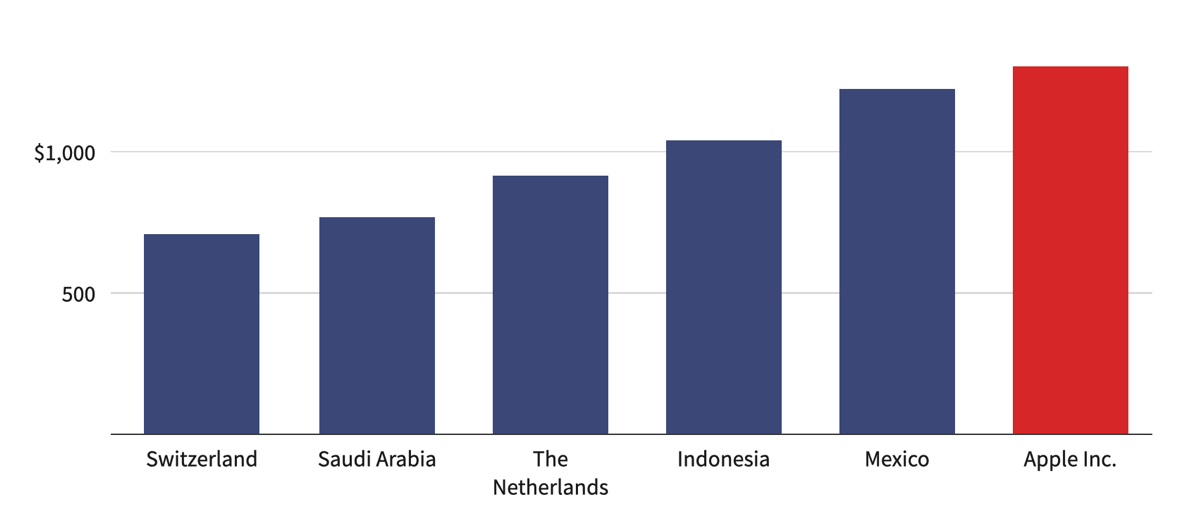
Globalization is both a cause and a consequence of the modern information revolution. The transmission of information is now almost immediate, and reports of economic opportunities and transactions are rapidly transmitted around the world, not only among private and closed investors. In particular, this is especially true of developments in stock exchanges, currency and commodity markets, and scientific discoveries and their use.
In addition, the economic liberalization of goods has led to the fact that for most well-known products, distribution to different countries, taking into account the available cultural traditions of the environment, takes only a few weeks or even days. In other words, the remoteness of business partners from one another is no longer a decisive obstacle to their productive cooperation. All of the above together form the main driving forces of globalization affecting the entire world.
More specifically, the necessary preconditions for globalization include organizational, productive, technical, economic, political, and informational driving forces. Although the benefits of globalization and its drawbacks are perceived differently at different levels, large corporations have long since come to understand the potential financial and reputational results of implementing their marketing activities across continents.
Thus, true multinationals are born only when a company learns to mobilize capital in other countries. A rather dramatic scale of production characterizes globalization, a gradual shift to more intelligent and computerized labor, improvements in transportation and logistics networks, the globalization of non-governmental organizations, the liberalization of trade in goods and services, and a radical change in the means of business communication (Rahman, 2020). According to the Bang (2017) model in Figure 2, the drivers of globalization, combined with dimensional, geographic, and pressure effects, intensify competitive forces and significantly improve the quality of supply. It follows that the effects of globalization are hard to underestimate, and its factors can be seen both on individual states and in the context of companies, whether large or small businesses.
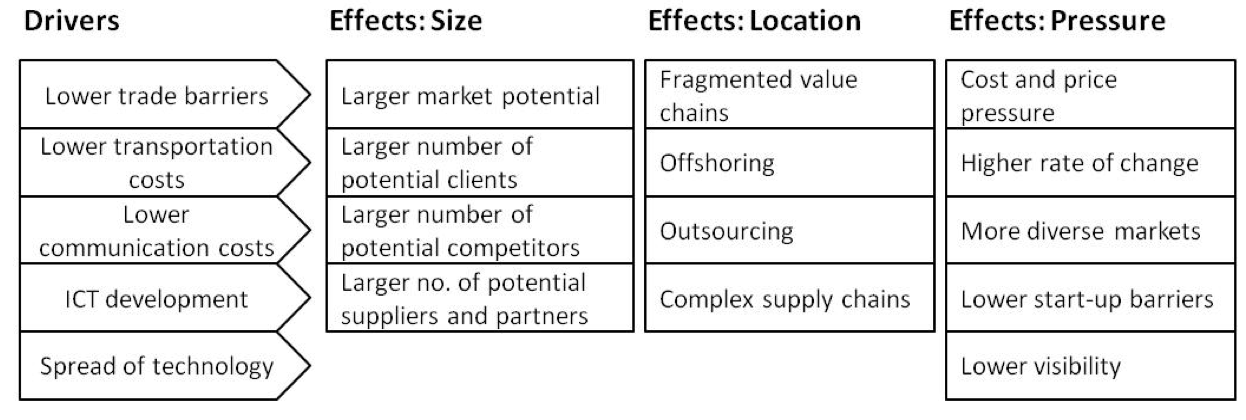
The United Arab Emirates
As part of Asia’s southwestern border, the United Arab Emirates, UAE, is washed by the waters of the Persian Gulf and the Gulf of Oman along the northern coast of the state. The country’s major neighboring territories are Qatar, Saudi Arabia, and Oman. Geographically, the UAE is a collection of seven emirates, namely Abu Dhabi, Dubai, Sharjah, Ras Al Khaimah, Ajman, Umm Al Quwain, and Fujairah, with Abu Dhabi traditionally remaining the largest area and capital of the UAE.
When answering the question about the multiple effects of globalization on the UAE, first of all, it is worth specifying the reference point relative to which the reference point should be made. It must be admitted that there is no consensus among the historical studies of this process of international cohesion regarding the date of the beginning of globalization processes, but there are several weighty views. Most scholars tend to believe that the processes of globalization began with the voyage of the Spanish navigator Christopher Columbus, who discovered America for Europe in 1492 (Globalization, 2019). On the other hand, as a phenomenon in its modern sense, globalization did not begin before World War II and presumably dates back to the 1980s (When Did Globalization Start, 2020). For the analysis of the globalization situation in the UAE, the second interpretation seems more appropriate, so the study of the dynamics of demography is carried out over the last forty years.
The study of the size and composition of the UAE’s population reveals intriguing facts. First of all, it is worth noting that considering all seven emirates included, the country’s population was 9.89 million citizens as estimated for 2020 (the United Arab Emirates, 2020). Obviously, this was not always the case, and in hindsight, one can see that the population has expectedly increased about tenfold since 1980 (Figure 3). One would assume that such figures are justified by a comfortable climate and an appropriate demographic policy of the association. However, more substantive statistics clarify that this is not the case: the natural population growth rate is lower than it was characteristic of the 1980s (Figure 4). In addition, the birth rate during the period in question fell markedly by almost a factor of four (Figure 5). It can only follow from this that the population growth characteristic of the UAE in 2020 is due to immigration.
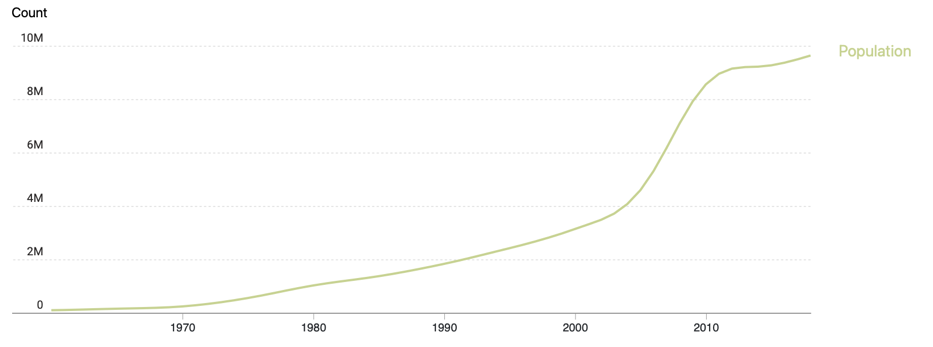
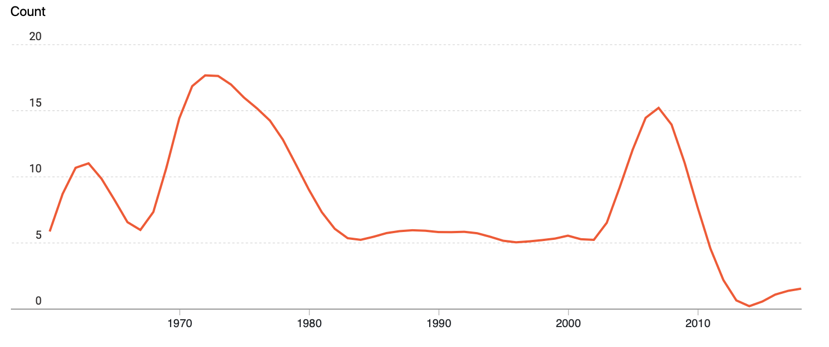
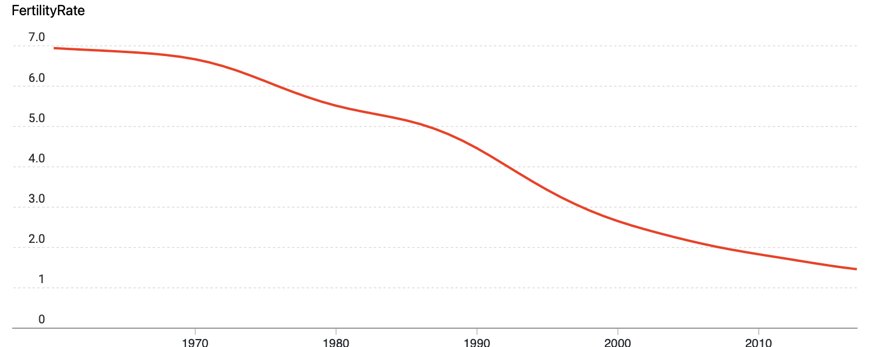
This assumption can be confirmed by an analysis of the compositional structure of the population. A large share of the population is composed of people aged 25-54, financially independent and capable of moving independently worldwide. Simultaneously, 88.52% of the residents are expatriates who come to live or work in the UAE. The ethnic composition is shown in Figure 6 and shows that a significant portion of the population is made up of Indian and Pakistani families (Population of the UAE, 2020). It is evident from the above data that the UAE in today’s world is a strategically important site, illustrating the phenomenon of globalization in both cultural and economic senses.
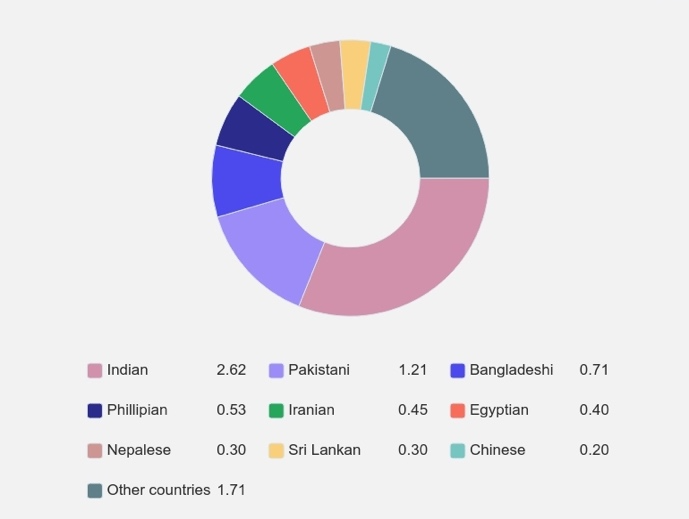
LuLu Group International
Recognizing the UAE’s importance as an international trading center on the world stage, special attention should be paid to examining the impact of globalization drivers on the country’s companies. The analysis object is the Arab transatlantic company LuLu Group Int., which focuses on retail sales through hypermarket chains that have spread to many countries. The company officially began operating in the late 1990s in Abu Dhabi, but the first LuLu hypermarket was opened to the public in 2000 in Dubai. From that time began a large-scale organizational work on the expansion, and by 2020, LuLu Group Int. is presented by more than 192 branches in 22 countries of the Persian Gulf, India, Malaysia, and Indonesia (About LuLu, 2020). Today, the company controls over 32% of the retail market share in nearby countries (Company Profile, 2019). The company is also actively investing in the development of logistics networks in several Indian states for, presumably, the creation of new branch outlets shortly.
The above factors clearly show that LuLu Group Int. meets the criterion of very rapid growth inherent in large companies in the era of globalization. Additionally, this can be confirmed by a financial comparison of the companies: in terms of annual fund turnover, the selected company ($7.4 bill.) is commensurate with such industry market giants as Giant Eagle ($9.13 bill.), Polo Ralph Lauren ($6.16 bill.) or Hy-Vee ($10.15 bill.) (Farfan, 2020). There are, however, other effects of globalization on the company. For ease of reference, these are summarized in Table 1. Taken together, it is possible to determine that globalization has a severe impact on both the UAE and LuLu Group Int. in particular. In other words, under the pressure of integration processes, the company and the state are gradually restructuring, becoming more flexible and adaptive.
Table 1: Manifestation of Globalization Pressure on LuLu Group Int.
The Effects of Globalization: Russia, the United States, and China
More than forty years have passed since globalization was officially introduced into the discourse of the academic sociological world and the public. During this time, researchers have been able to assess the trends of the modern world fully and consider in detail the potential consequences of globalization, bearing both positive and negative effects. First of all, it is about socio-economic problems, the causes of which are the mechanisms of deep cultural and productive integration between regions, and even continents. Although it may seem paradoxical, the problem of social inequality occupies a prominent place in this discussion.
First of all, it is worth recognizing that any society, however developed, is characterized by an unequal distribution of material and symbolic goods, rewards, and opportunities, both concerning individuals and between groups within a society. This is mainly due to the diversity of relationships, roles, and positions between people. As a rule, societies are structured according to many possible criteria: national, social class, or demographic. Thus, people belonging to specific social, professional, and socio-demographic groups often generate social inequalities.
Accepting people’s economic inequality as the core of possible social problems is also worth noting that alternative manifestations can also represent this factor. In particular, age inequality ensures that older people are more vulnerable in working relationships and social opportunities. For example, only 10% of U.S. retirees find themselves employed, which is due to personal desire and discrimination by employers (Reiners, 2019). On the other hand, gender inequality, although rapidly decreasing, is still an important issue that needs attention. Of the 187 countries in the world measured, only six European states grant women equal legal rights to men, as shown in Figure 7.
Additionally, it is important to recognize that cultural and religious inequalities caused by ethnic diversity are also vital. In particular, in some developed countries, such as the United States or members of the European Union, there is a bias against Muslims, provoked by terrorist attacks. For example, according to Masci (2019), 82 percent of Americans recognize that practicing Muslims may indeed be subject to discriminatory policies. Regardless of the type, inequality has several negative consequences that have the potential to disrupt the structure of social ties and lead to conflict, including armed.
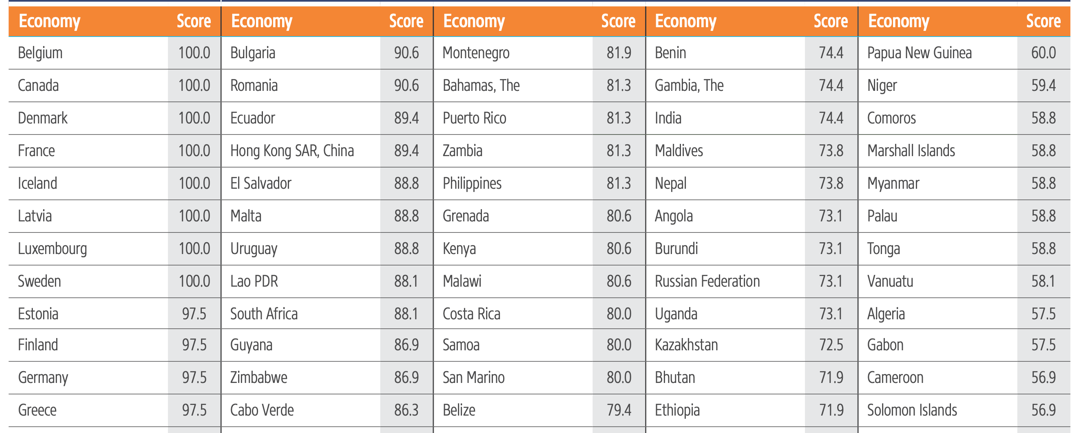
There is no doubt that global financial crises have a direct impact on inequality by stimulating class differentiation. The wealthier population has no difficulty surviving crises, while the poorer and lower society members have to survive. Since the level of income determines a person’s position in the social hierarchy, since the importance of money is exceptionally high, it is appropriate to analyze the possible consequences of inequality in this sphere.
As a result of economic inequality, there is an unequal distribution of property. Whereas some people, due to high income, will have more expensive and higher-quality housing, others, who have lower income levels, are correspondingly worse off. In addition, there is a diversification of intellectual, physical, and entrepreneurial abilities: income inequality plays an important role, and the personal characteristics of the person who engages in economic activity. Often, the illiterate decisions of people who do not know the basics of economic theories lead to fatal mistakes. In other words, the level of education available also becomes a factor and predictor of social inequality. Ultimately, inequality and poverty, generated by the unequal distribution of valuable resources, generate conflict and war among populations.
The consequences develop gradually and are reflected in the slow development of many countries, which leads to the fact that progress in the economy is also slowed, democracy as a system loses its position, and tension, discontent, and psychological pressure grow in society. Indeed, it should be clearly understood that globalization is not the only factor in developing social inequalities. Numerous economic systems failures, mismanagement of the state, natural disasters, or force majeure can often be the reason for the emergence of failure between different social classes. Nevertheless, in the context of this study, it is the globalization processes that lead to the intensification of important inequalities.
Thus, it is of paramount importance to recognize that rising incomes in advanced economies, where people of different ethnic backgrounds often hold high-skill jobs, also mean that a gap between classes is forming. The division of labor inherent in large multinational companies is mainly responsible for these problems. In an era of significant technological advancements, large conglomerates prefer to delegate low-skilled labor to regions with comparatively lower wages. For example, in poor Asian countries, specialists developing parts for smart devices are paid considerably less than the same specialists with the same knowledge in large countries.
On the other hand, if a company intends to maintain an organizational culture of equality and integrity, it will pay additional compensation to local employees. However, in this case, a crisis of socio-economic relations develops in developing countries because employees of a multinational company receive significantly higher sums than, for example, workers in the agricultural sector.
Moreover, it is not difficult to understand that even in the context of globalization, relations between countries are often structured hierarchically. Given both sides of trade agreements’ commercial interests, large and developed countries often find themselves with more authority and power, covertly guiding smaller states. This affects both geopolitically and culturally. In particular, realizing that American entrepreneurs own many companies in a poor city, African residents may have profound dissatisfaction with their circumstances. The cause-and-effect relationship of this idea is such that in the minds of more impoverished people, there is the impression that surplus local finances are migrating abroad, and thus the region is rapidly becoming poorer. This, in turn, can only worsen relations between countries.
Nevertheless, it is fair to say that globalization also has several significant benefits for social equality. The opening of borders and the continuity of experiences and opinions become predictors of cultures’ humanization and democratization. Thus, over time, even the most conservative countries abolish seemingly inhumane laws (Specia, 2019). Moreover, globalization makes education more accessible, increasing the intellectual resources of states (Ferreira, 2018). Thanks to cross-national trade, low regions get a chance to participate in the economic race and survival, the success of which, it should be said, is determined by the efficiency of the governing power. Thus, it cannot be unequivocally argued that globalization increases or decreases inequality.
This thesis can be confirmed by a detailed study of some significant cultures, such as Russia, China, and the United States. Given the historical context, it must be acknowledged that globalization affected post-Soviet Russia during the collapse of the Soviet Union when the Iron Curtain was lifted from the state. Nevertheless, the privatization policy and the numerous corruption schemes in the nineties Russia caused a sharp impoverishment of the population. Although, in reality, the poverty index in Russia has fallen significantly over the past thirty years (Figure 8), the division of economic wealth between the capital city of Moscow and the region has increased (Poverty, 2016). As a result, residents of Russia’s nonpoor regions have significantly lower wages and social guarantees than residents of large cities, which in itself generates social inequality.
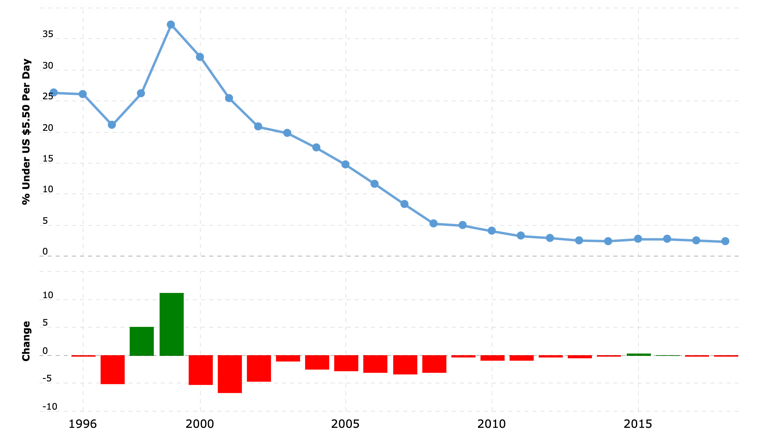
On the other hand, a comparable situation is actual for Chinese cities. In particular, China’s rise as a global market leader has led to an increased demand for highly skilled and intellectual labor. As a result, the incomes of people with access to quality education have increased significantly, which has only widened the gap between the middle and poor classes (Merler, 2018). Numerically, this is evidenced by an increase in real income for the upper classes compared to a decrease for low-skilled workers, as shown in Figure 9. However, as in Russia’s case, the reason for these phenomena is the relative stagnation in the development of rural regions compared to large cities.
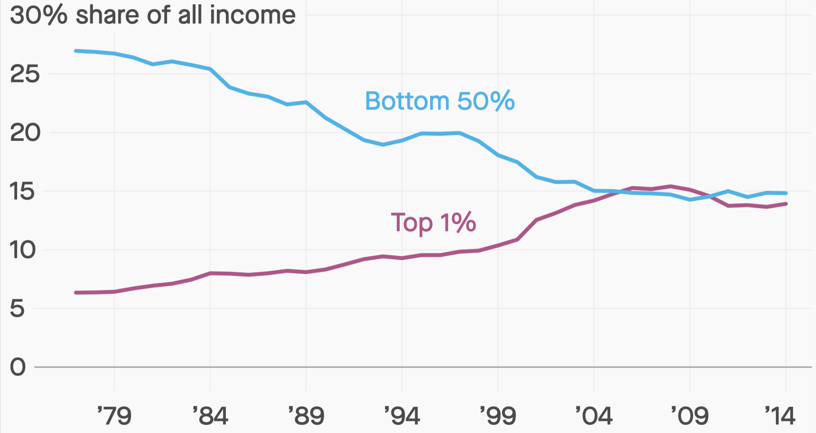
The problem of economic inequality in the United States stems from the unequal distribution of money among society’s classes. While, in fact, the middle class has been shrinking rapidly in recent decades, the growth in the share of adults in the upper classes has been almost commensurate with the growth in the lower classes (Kopf, 2019; Horowitz, Igielnik, and Kochhar, 2020). It follows that the financial chasm between the two opposing sides is gradually widening. As a result, wealthy Americans are getting richer at a faster rate, including by investing in stock markets. Poor U.S. residents who do not have enough money to participate in trades find themselves in a knowingly losing position. In this sense, globalization only exacerbates the problem of inequality since the U.S. is characterized by an influx of human intellectual resources that earn comparably higher wages than those of the lower classes.
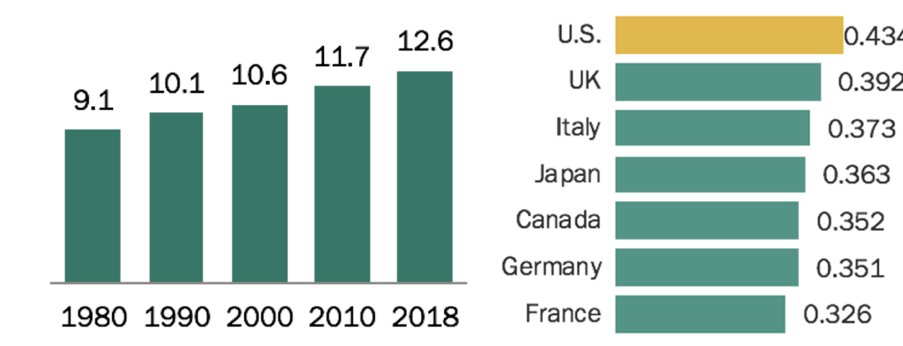
Managing Employee Displacement: The Expatriate Problem
Explaining the Expatriate Phenomenon
The United Arab Emirates, as already mentioned, is an incredible center of attraction for international professionals in a wide variety of fields. The rapid pace of economic growth, friendly migration policies, and environmental conditions create a favorable environment for the relocation of highly skilled human resources from all over the world. Therefore, almost one in nine UAE residents is a foreigner arriving on work or study invitations (Population of the UAE, 2020). In this sense, company management and the specialized department of human resources management face the urgent problem of controlling and supporting immigrants in employment and ensuring a comfortable life in the region. Terminologically, this category of workers is commonly referred to as expatriates.
Before discussing in detail potential corporate policies designed to facilitate the relocation and improve the quality of life of immigrants, it is essential to understand the expatriate phenomenon systematically. Historically, this phenomenon has accompanied the effects of globalization, with large companies spreading their subsidiaries to other states. In the event of any crisis that required the firm’s senior managers’ presence, employees would travel independently to other states to manage the situation. Although in those days, such decisions were primarily due to the impossibility of a quick response due to the lack of functioning communication channels, in the era of globalization, this process has become even more popular.
Nevertheless, it must be recognized that the increasing pace of globalization has simplified many of the associated processes, and expatriation has become commonplace, and people have been able to take high-paying jobs all over the world. If one looks at the numbers, one can see that the number of expatriates is rising. For example, according to Ong (2020), by 2017, about 66.2 million people in the world belonged to this category, while by 2021, it is expected to rise to 87.5 million. In other words, expatriation is becoming an increasingly standard practice for developing countries.
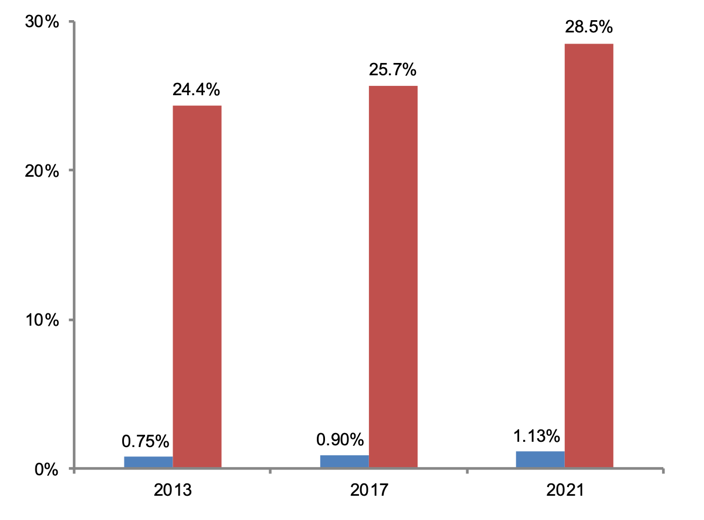
The literal meaning of the term can be interpreted as a person leaving their homeland or permanently residing in the territory of another country. Furthermore, it is critical to determine that this phenomenon is not related to travel or tourism: on the contrary, expatriation means a foreign employee’s professional work in the territory of a given state. At the same time, representatives of this cohort, although legally migrants, in fact, have a significant difference from them. In particular, migrants traditionally refer to low-skilled laborers, often illegally residing in a non-native region, whereas in the case of an ex-pat, one has official permission not only to enter but also to perform professional labor activities (Koppenfels, 2016). Thus, in the hierarchy of social classes, expatriates are slightly higher than migrants, and they have a number of powerful advantages.
It is possible to identify three significant advantages of the average ex-pat compared to residents of the country or even migrants. First of all, they are highly motivated to achieve their work goals and professional career growth and development. It is worth recognizing that a foreigner who has signed an organizational contract for a limited time and has a desire to stay in this country is willing to show excellent results in order to keep the workplace. This, in turn, leads to a second benefit for the company from expatriation. In particular, increased motivation leads to increased healthy competition among employees and sets other colleagues up for positive work.
Finally, it is worth recognizing that the differential pay model remains relevant in most developed countries, so the wage gap between local employees and expatriates can be tangible. Even if a foreigner is paid less for the same effort, it can still be quite significant financially by the standards of their culture and home country. Thus, these three benefits justify increased intellectual migration flows around the world.
Centrally Regulated Expatriation Policy
Established in 1981, the Gulf Cooperation Council, GCC, has become the central interstate body governing the economic and international policies of the Persian Gulf. The organization, which includes Bahrain, Kuwait, Oman, Qatar, Saudi Arabia, and the UAE, ensures coordination, cooperation, and integration in all territorial economic, social, and cultural affairs. Without taking into account sectors of governance unrelated to the subject of this study, it is important to note first of all that controlling migration flows and supporting expatriation are the priority tasks of the GCC.
Almost forty years after its formation, the relevance of this body is due to the continuous trend of foreigners settling in the Gulf, especially in the UAE, on work and study visas. According to Go-Gulf (2016) statistics, approximately 48.1% of the population in these areas are expatriates from other states, so the need for management remains urgent. Interestingly, Go-Gulf (2016) also highlights that about half of all ex-pats in the Middle East felt that they were earning much higher wages in their current workplace than they could at home. This merely summarizes the interest of citizens around the world in migrating to economically developed countries.
However, it should be made clear that expatriation itself is a fundamental challenge for the GCC. Indeed, attracting the world’s intellectual and highly developed resources is considered a tremendous advantage for the Arab world, as it increases the investment and scientific and technological reputation of GCC member countries. Inspired by globalization, many people from Western and Eastern states are leaving their preconceptions about the UAE’s Muslim traditions and going to live and work in the UAE. Nevertheless, migration flows bring their own cultural codes to the local environment, and this includes gender equality.
For example, Go-Gulf (2016) showed that about two-thirds of UAE expats are male, which means that over time a culture of inequality and gender overrepresentation develops. At the same time, the majority of migrants are young people, which leads to an overestimation of the age distribution of UAE residents. In other words, the GCC intensifies the cohort of people represented by young, highly skilled workers with relatively high wages, which in turn leads to the formation of a socio-economic gap between strata, and thus increases inequality.
Although the relocation of expatriates to Arab countries is a significant step in the lives of foreign nationals, in addition to the obvious financial and cultural benefits, it also entails a number of problems. In particular, as it is known, the GCC countries’ economic systems are centered around the extraction, processing, and transportation of oil and petroleum products. Nevertheless, this assertion is gradually ceasing to be entirely fair, as the UAE authorities seek to move away from dependence on oil supplies toward a diversified economy, developing, among others, tourist destinations (Is the United Arab Emirates, 2018).
For example, the total contribution of tourism to the UAE’s GDP was, as of 2019, $43.3 billion, with an expected increase to $72 billion by 2027 (Travel and Tourism, 2020). In other words, the central sectors of the Arab continent’s economy are directly dependent on the functioning of the significant globalizing systems of the modern world: international oil sales and tourism. Therefore, in times of global challenges that have a significant impact on these structures, the UAE’s financial well-being is threatened. More specifically, according to official news reports, ex-pats in 2020 were dissatisfied with the economic environment of life in the GCC countries, resulting in a projected outflow of highly skilled forces (the GCC States, 2019).
It is not difficult to understand that the global pandemic of the COVID-19 coronavirus infection was the cause of these disappointing scenarios for the UAE authorities. There is no guarantee that such catastrophic conditions will not cause the GCC and the UAE, in particular, to lose their appeal to expatriates in the future, so the GCC and UAE leadership must act decisively to retain and increase expatriate share.
Tax Policy in Expatriate Relations
The UAE’s federal tax policy toward expatriates is opaque and, at first, a glance may seem unnecessarily favorable. An inattentive expatriate may neglect to thoroughly familiarize themselves with the state’s tax system, which ultimately has the potential to become a significant problem for a migrant’s financial resources. Thus, the absence of income tax, and thus the need to file a tax return, clearly stimulates the intensification of migration crowds, but behind the apparent advantage, there are several important nuances that need to be discussed.
In particular, foreigners face the double taxation system, and although there is virtually no income tax in the UAE, this does not exempt ex-pats from paying taxes in their home state. True, it is fair to acknowledge that the GCC has an agreement with forty countries to reduce the tax burden on migrants by exempting them from double payments (Arnold, 2020). A CRS standard has been implemented to automate the exchange of information between the countries of the agreement, ensuring a smooth transfer of tax data if requested. In addition, the absence of mandatory payments also applies to pension fees.
Nevertheless, emigrants are required to pay a 3% property tax, while residents are exempt from such obligations. The UAE has also introduced additional excise taxes on goods that the government has deemed harmful to health and the environment. For example, a 50% product tax is added to the cost of a carbonated drink in a supermarket (Arnold, 2020). This measure is justified by the government’s desire to ensure a high quality of life for the nation and to encourage concern for health.
Current Issues: Housing and Religion Culture
In addition to the features of the UAE tax system discussed, it is important to note several other potential problems that local ex-pats may face. The importance of such research is determined by the need for a qualitative analysis that creates a foundation for discussing the areas in which companies, including LuLu Group Int. can support foreign workers. Common difficulties include both the characteristics of residence and religious and cultural affiliations.
In particular, it is worth remembering first that the UAE is a predominantly Muslim state, so visiting expats may encounter problems unknown to them in their home country. For example, any websites deemed offensive to local culture and Islam by the Arab government are officially blocked (Herrin, 2020). The same rules apply to VOIP telephony, so classic communication between foreigners and their families is complicated.
In addition, rigorous requirements, incomprehensible to the freedom-loving American, relate to the style of dress, behavior in public places, and the enforcement of laws. For the relationship-free expat woman, a simple walk down the street can be a very stressful experience for which she was not prepared (Jackman, 2020). In addition, the country has a very confusing address system, which can be intimidating for the newly arrived foreigner. It is expected that a company that cares about the well-being of its foreign employees will be able to show proper support and help the employee settle in.
The problem of expats’ participation in local professional unions and the payment of wages deserves special attention. Indeed, if an employee works for a big company with a well-known brand, there are hardly any problems with timely payment and the professional attitude of colleagues, managers, or executives. However, it is worth remembering that expatriates are not only highly skilled workers from developed states but also employees hired from more impoverished regions. Thus, Herrin (2020) reported that there are problems, including ‘slavery,’ when it comes to the formal employment of middle-skilled workers.
According to the author, such ex-pats sign long-term work contracts for ten years, during which time their passports are illegally seized. In the same sense, companies often delay the payment of wages and compensation benefits. Such inadequate management policies lead to negative public sentiments and even worker revolts. However, the participation of ex-pats in such events is extremely risky, as it can threaten them with the termination of their employment contract and deportation.
Standards for Corporate Expatriate Support
Expatriation remains a significant issue for companies’ human resource management departments because a company’s global reputation depends on how well established the corporate support and hierarchy are. Organizational work with an applicant begins the moment approval for hiring is received from both sides. A good expatriate support service should design the earliest stages of a foreign employee’s relocation, beginning with preparations for the move (Expatriate Management, 2018).
Indeed, in this case, standard and stereotypical interaction patterns are hardly noteworthy because the HR service employee must take into account the cultural and linguistic peculiarities of the migrant. It is essential to determine whether an ex-pat is moving to a new country alone or with their family. Supporting the newly arrived employee with the help of a local administrator who is intimately familiar with the characteristics of the city and the employee’s background culture is a successful strategy to create a comfortable environment for settling in. Such assistance may include not only a personal tour of the city but also assistance in locating a school, hospital, tax analysis, or legislative restrictions of the region. Other areas of uninterrupted assistance that the HR department can provide to an expat are health care accompaniment, support in designing social connections, and information opportunities.
The LuLu Group Int. Case
LuLu Group Int., as one of the progressive multinational companies that extend its corporate policy also beyond the UAE, is obviously interested in hiring highly qualified personnel from different cultural and ethnic groups. Confirmation of this assertion is easily found when analyzing the top management of LuLu Group Int.: Yusuffali M. A., the CEO, and creator of the network, is from an Indian family, and thus a true expat (Agencies, 2019). Therefore, the company is willing to work closely with foreigners and create a cross-national organizational culture of diversity and diversification (Human Asset, 2020). This hypothetical scenario examines what sort of support the company is willing to provide in helping a young professional from India with a wife and a three-year-old child finds employment and a comfortable living environment.
Once the interview stages have been passed, a bilateral internal agreement must be obtained to launch a relocation support program for the employee and his family, guaranteeing that each party to the agreement will fulfill its obligations. Before Lulu Group Int. begins matching the young family with culturally appropriate living arrangements in India, the company will send the consulate of the expat’s country confirmation for the issuance of a work visa, depending on the terms of the employment contract: this could be for five or ten years. Once the Indian consulate has approved the young family’s expatriation, the relocation phase begins (LuLu Group International Employee Benefits, 2020).
At this point, it is worth noting separately that in some cases, the company or local consulate may not approve the move for the entire family, and these cases require a case-by-case approach. In such cases, the employee may be offered to residents in the UAE on their own, with family members remaining in India.
LuLu Group Int. can cover all declared expenses related to relocation and transportation of the young family’s household items. However, the company must warn the expatriate of significant import restrictions: these include dogs of fighting breeds, partly religious texts, and art objects (A Comprehensive Guide, 2019). In addition, if an expatriate requires medication, their passage through customs is limited to a three-month supply only. Upon arrival, LuLu Group Int.’s HRM staff is available to accompany the young family’s absorption processes in the new urban environment and offer assistance with medical cards and bank accounts. In addition, the company can help parents with the registration of the child in educational centers, if necessary.
The company’s human resource management department’s primary efforts are aimed at attracting and retaining the most valuable assets, among which are talents with high competencies. Therefore, the company has an employee motivation system that involves monetary and compensation payments for employees who show the best results in the reporting period (Abbas, 2020; Adil, 2020). Summarizing the above, more detailed responses to specific patterns of behavior of a young professional or his family members are presented in Figure 12.
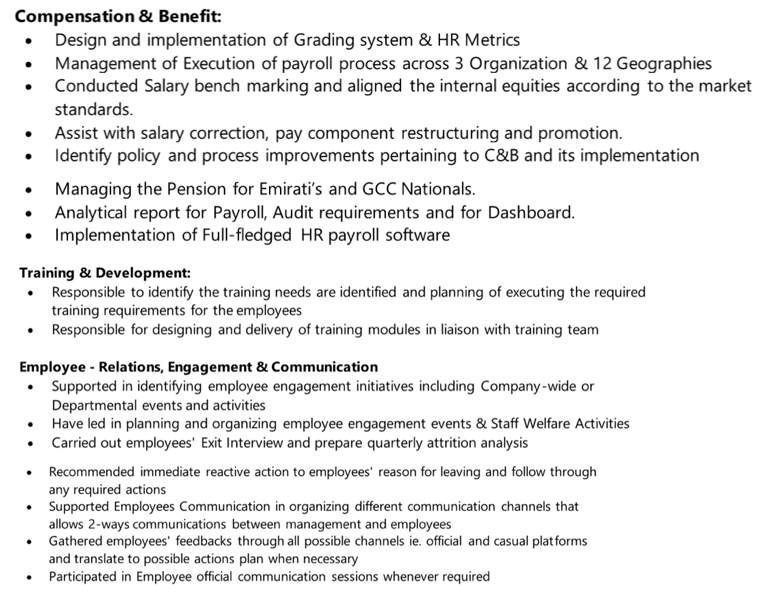
Summary
To summarize this paper, globalization is an unstoppable interstate integration process, leading to the erasure of national boundaries and the formation of a single cultural layer. The prominent leaders of the era of globalization are large multinational companies, including the Arab LuLu Group Int. This company highly values the culture of diversity, so the paper showed what measures HR professionals could use to attract ex-pats. Finally, expatriation is a growing process of mass migration of human resources to countries with more attractive living and working conditions. Given the ongoing development of globalization effects, we can expect that the number of ex-pats will only increase over time.
Reference List
Abbas, W. (2020) Jobs in UAE: LuLu is Hiring, Walk-In Interviews for Different Roles. Web.
About LuLu Group International (2020). Web.
Adil (2020) LuLu Hypermarket Careers 2021 Announced For UAE Latest Openings. Web.
Agencies (2019) LuLu Group Chairman is UAE’s First Permanent Expat Resident. Web.
Arnold, S. (2020) A Guide to the Tax System in the United Arab Emirates. Web.
Bang, K.E. and Markeset, T. (2017) Identifying the Drivers of Economic Globalization and the Effects on Companies’ Competitive Situation. Web.
Company Profile LuLu Group International (2019). Web.
A Comprehensive Guide on Relocating to the UAE (2019). Web.
Expatriate Management: 5 Ways HR Can Help (2018). Web.
Farfan, B. (2020) The Largest Supermarket Chains in 2019. Web.
Ferreira, J. L. (2018) Is Globalization Causing Inequality? Web.
GCC States: Easy to Settle In, but Lacking Job Security (2019). Web.
Herrin, B. (2020) 20 Reasons Not To Move To Dubai (In No Particular Order). Web.
Horowitz, J. M., Igielnik, R., and Kochhar, R. (2020) Trends in Income and Wealth Inequality. Web.
Human Asset (2020). Web.
Is the United Arab Emirates Economy Still Dependent on Oil? (2018). Web.
Globalization (2019). Web.
Go-Gulf (2016) Expats in Middle East — Statistics and Trends. Web.
Kader, M. (2020) Head of HR. Web.
Kolakowski, M. (2020) At $1.3 Trillion, Apple is Bigger Than These Things. Web.
Kolb, M. (2018) What Is Globalization?. Web.
Kopf, D. (2019) After 40 Years of Capitalism, China’s Income is Divided Almost as Unequally as America’s. Web.
Koppenfels, A. K. (2016) What’s the Difference Between a Migrant and an Expat?. Web.
LuLu Boosts E-Commerce Strategy with First Online Fulfilment Centre in the UAE (2020). Web.
LuLu Group International (2020). Web.
LuLu Group International Employee Benefits (2020). Web.
LuLu Group International Signs on as a Founding Partner of The Reach Campaign, Joining Effort to End River Blindness (2020). Web.
LuLu Hypermarket Cuts Prices of 50 Items (2020). Web.
Lulu Hypermarkets to Take Part in WEF 2019 (2019). Web.
Masci, D. (2019) Many Americans See Religious Discrimination in U.S. – Especially Against Muslims. Web.
Merler, S. (2018) Inequality in China. Web.
Ong, A. (2020) Press Release. Web.
Population of the UAE (2020). Web.
Poverty in Russia Rising at Fastest Pace Since 1990s Turmoil (2016). Web.
Rahman, M. (2020) What are the Driving Forces Behind Globalization?. Web.
Reiners, B. (2019) The Cold, Hard Truth about Ageism in the Workplace. Web.
Russia Poverty Rate 1993-2020 (2020). Web.
Specia, M. (2019) Saudi Arabia Granted Women the Right to Drive. A Year on, It’s Still Complicated. Web.
Travel and Tourism (2020). Web.
United Arab Emirates (2020). Web.
When Did Globalization Start? (2020). Web.
Women, Business and the Law (2020). Web.
Yusuff Ali M.A Named as Abu Dhabi Sustainable Leader of the Year (2020). Web.